from the brooklyn public library to moominvalley: a celebration of tove jansson
a toast to tove!
On Friday evening, I walked to the Brooklyn Public Library for a talk titled Tove Jansson & The Responsibility of Children's Literature. Along Eastern Parkway, Moomin decals dotted the library windows, the beloved characters beckoning before I reached the entrance.
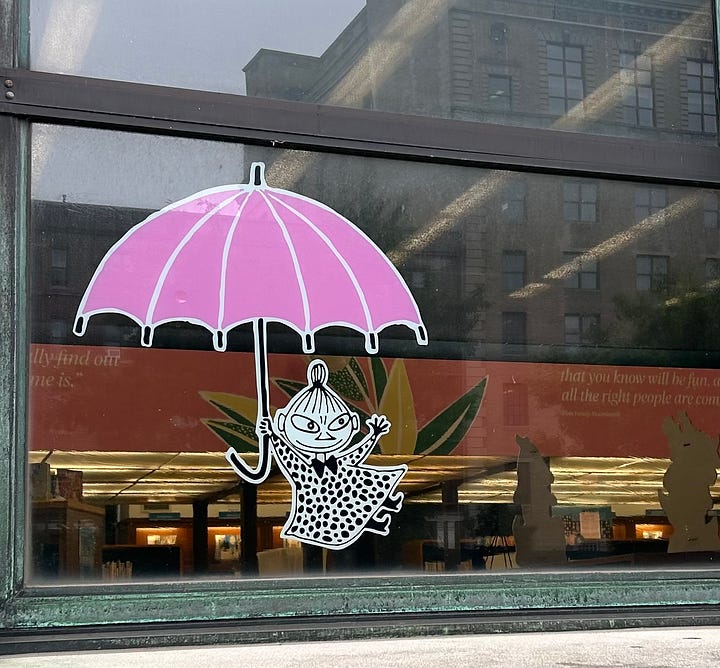
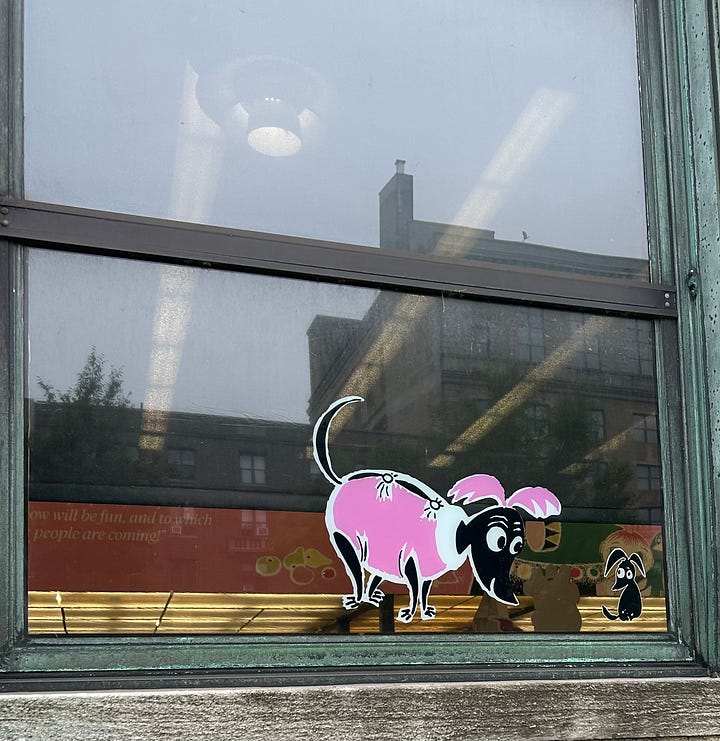


The small auditorium filled quickly, turning to standing room only as panelists took the stage with the casual air of intellectuals arriving straight from another engagement, tote bags still slung over their shoulders. The lineup included: M.T. Anderson, the New York Times bestselling author who spans children's, teen, and adult literature; Tracy Hurren, VP Editorial and co-owner of Montreal-based Drawn & Quarterly, the publisher behind Moomin's North American editions; and Lauren LeBlanc, a writer whose recent Atlantic piece examined Jansson's NYRB-reissued novel, Sun City.
The conversation meandered through wide-ranging topics but inevitably always returned to the woman of the hour, Tove Jansson. A woman who lived with fierce independence and an uncompromising sense of self. A woman who wrestled with life's heaviest questions through storytelling, creating worlds that served as both a mirror and refuge from the tragedies that surrounded her, as if by innate obligation.
Below are some excerpts from conversations between the delightful panelists.
On the concept of “responsibility” in Jansson’s work:
TH: “In hindsight, looking back at her work through a queer lens, this idea of chosen family is so strong. Everyone is welcome at the Moomin house, and if someone wants to come for dinner, you enlarge the table, and if someone wants to live there, you build a new bed. It really is the most welcoming, generous idea of family and community that she's represented in this world. But I have a hard time thinking about that as a responsibility—more so, I think it's inherently who she was.”
LL: “She was in her early 30s. This was a time in which people were probably looking at her and wondering, ‘Why aren't you settling down? Why aren't you having children?’ And I think the response, perhaps, to that conflict was to write these books that were speaking to children—but, you know, were really speaking on universal levels to, ‘What does it mean to bring children into a world where there is always going to be war?’”
M.T.A: “She actually wrote an essay in 1961, a really interesting essay called The Deceitful Writer of Children's Books, where she says, ‘If you think that I'm writing these stories for children, you're mistaken. I'm writing these stories for myself.’ It's like she basically says, ‘I write the thing I need to do for this child within me.’ And it happens to connect with other people, is sort of her attitude. So even there, there's a certain kind of defiant individuality.”
On the structure and mood of Jansson’s work:
M.T.A: “Many of her books follow the same structure, which is a very simple one on the surface. She tends to have an opening event that unsettles the Moomins from the sort of bourgeois run of their world. And they are thrown into some kind of catastrophe, and then the chapters that follow are almost like little short stories, in many cases, each one focusing on a different character. And then there are a few chapters at the end where the plot really kind of coalesces again, having been somewhat loose along the way. What I think is wonderful about that structure is the mood it creates for a child, and the way that children experience the world as a series of very small adventures that do take place in the neighborhood. These places, these sites, like the library, become a place where a certain kind of adventure happens. The deli becomes a place where a certain kind of adventure happens. And it's the way that children start to kind of piece together a world that becomes larger and larger and larger as you grow older and older.
TH: "There's also like a restlessness to it as well that I find really charming. And I think there's a restlessness to Tove in her larger body of work. Maybe restlessness sounds negative, but I think of it in a very positive way.”
LL: “I think of a character like Snufkin, who comes and goes as they feel. And reading these books again recently, I was thinking, what a lovely introduction for children to understand that people will come and go from your life. And if they're meant to be a part of your life, they'll come back. And you have to have a certain element of trust there to know that they will return, but that they should have, and need, freedom. And it's that early sense of, you know, of understanding our interdependence and our independence in the world. What a wonderful thing to view that as a child—to see the world as a series of adventures, and not as something we need to accomplish, checking things off the list or, you know, reaching certain milestones or thresholds. What matters is the journey, and what matters are the people that you need to sweep in along the way, and how we treat one another. And is everyone enjoying themselves? And did everyone have cake? And at the end of it all, did—how does everyone find themselves? And will we do this again?”
M.T.A: "The last book, for those of you who haven't read it—Moominland in November—is a wonderfully bizarre, almost expressionist kind of thing, where the Moomins are largely absent. These people go to Moominvalley, and the Moomins aren't there. So you're waiting for the Moomins the whole book. It's sort of like French existentialism or something. But sadness is also so potent and so real that, as you get older, it is wound into the fabric of the party too: ‘We’re together right now. We're not always going to be together.’”
After the talk concluded, we were invited upstairs for a preview of Tove Jansson and the Moomins: The Door Is Always Open, the first-ever U.S. exhibition dedicated to Jansson. This free (where would we be without the public library!?) show explores Jansson's creative universe through immersive installations, rare archival materials, and international editions of her work, tracing the Moomins' global journey from the original 1940s publications through theatrical, television, and musical adaptations. The exhibit also explores Jansson’s personal life, following her path from a young political satirist to a queer woman navigating life in postwar Europe.



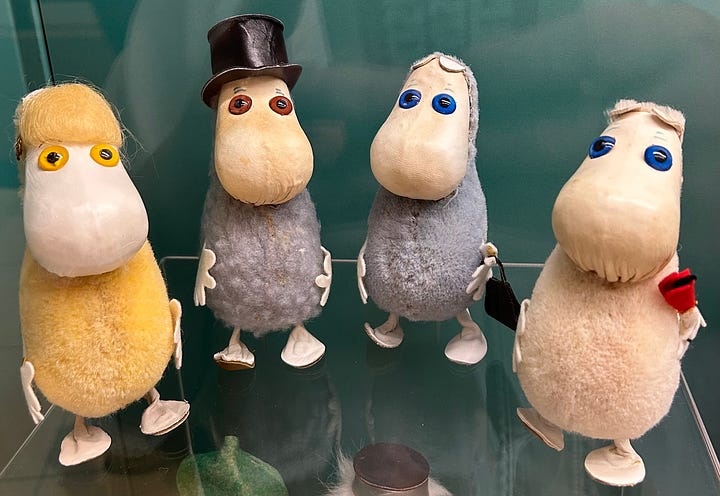

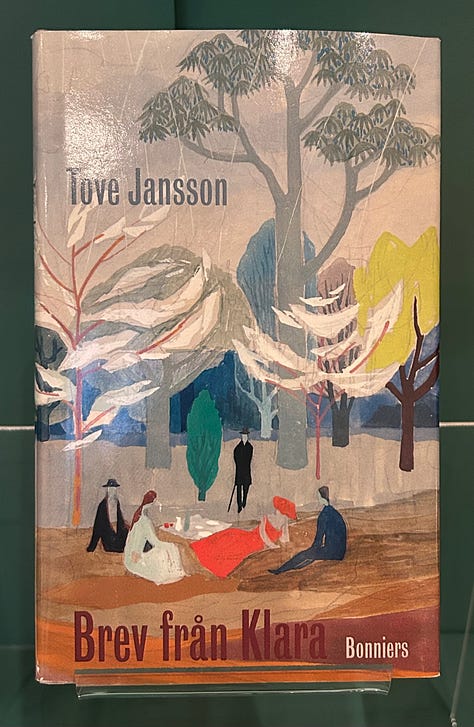
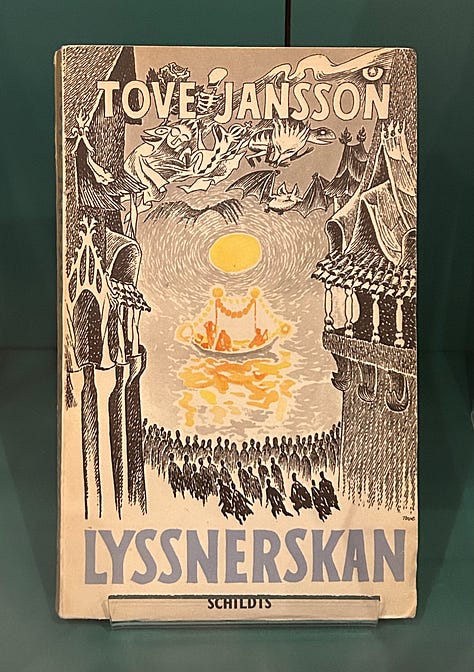
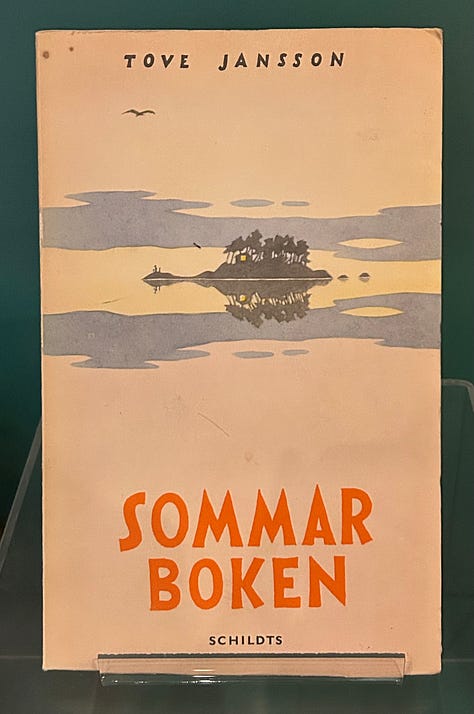
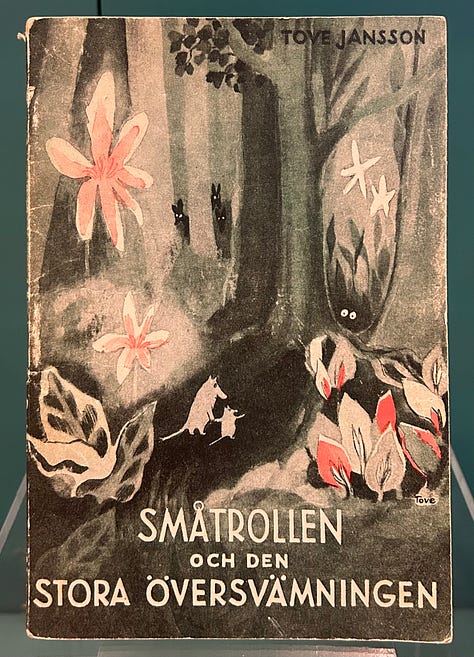
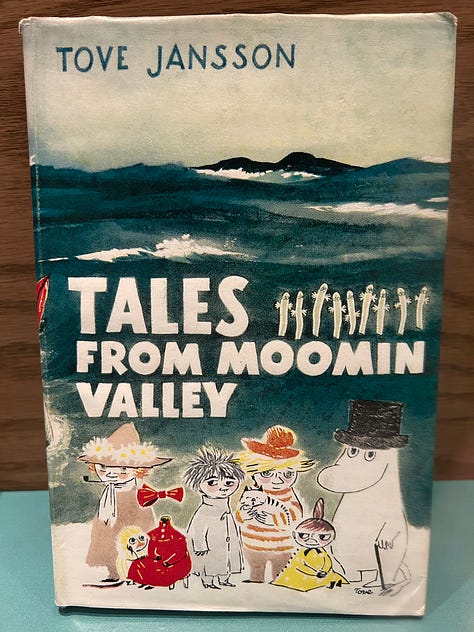
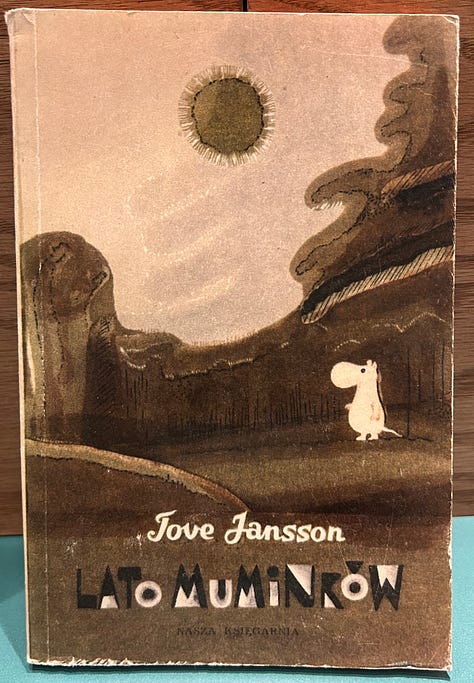


I’ve thought of Jansson often these past few days, her marvelous characters perpetually dancing through my mind. I’m continually struck by her complexity, her boldness, her commitment to artistry, and her insistence on expressing herself on her own terms, in her own time. As Alix Ohlin writes:
“Jansson was an artist and a businesswoman, an idealist and a pragmatist. She initially proposed to a man before making her life with a woman. She felt trapped by the success of the Moomin stories at times, but was too practical to walk away from it. She was able to take whatever strangeness she found in her own life and parlay it into stories, endlessly.”
I came to the library on Friday night already steeped in Jansson’s world—her chapter books and comic strips, her novels, even a memorable exhibition at Copenhagen’s GL STRAND in 2017. And yet, the panelists’ thoughtful reflections and the exhibit’s subtle details still managed to surprise me, offering unexpected intimacies and quiet revelations. It felt a little like discovering a hidden room in a house you thought you knew by heart.
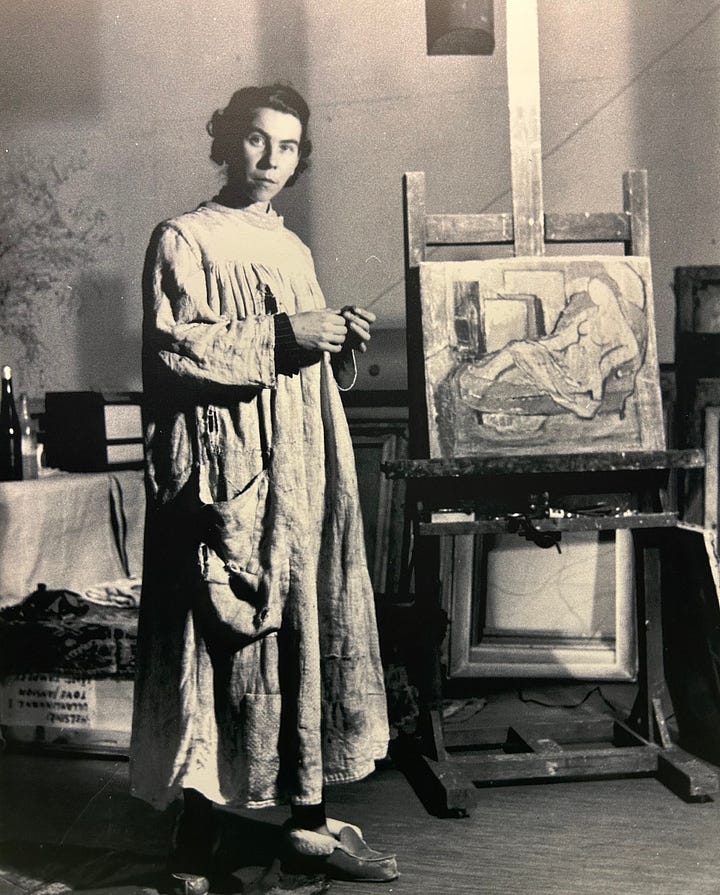
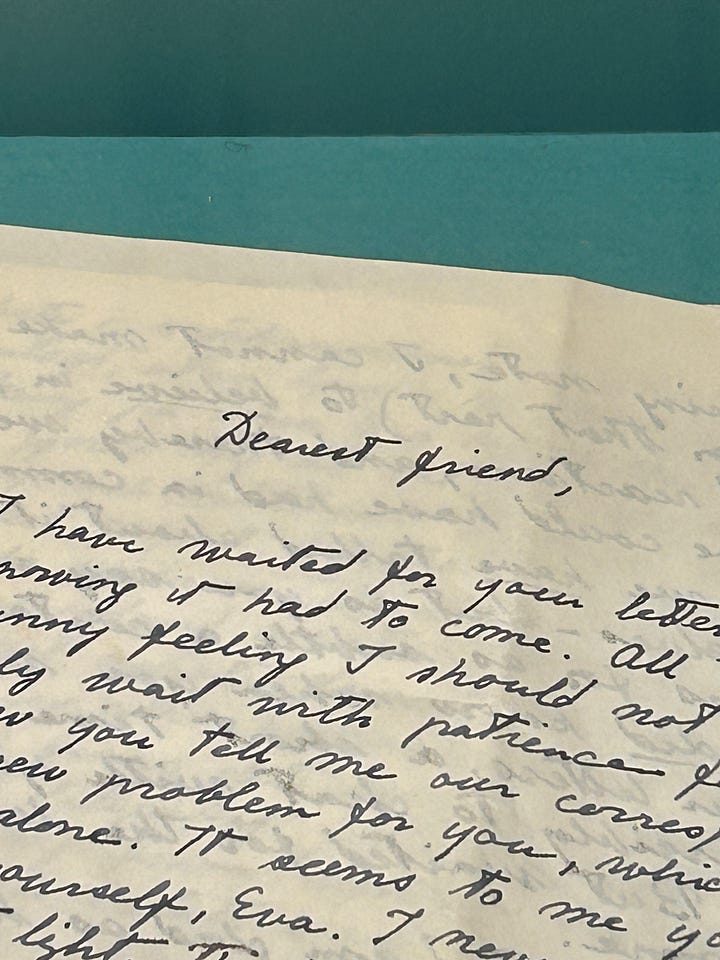
Thanks for reading. If you enjoy children’s books and reading about them, and want to help keep this newsletter free for everyone, consider subscribing for just $5/month. No offspring required.


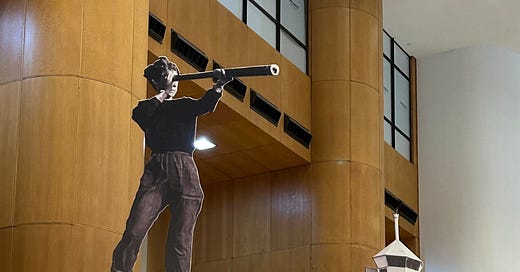


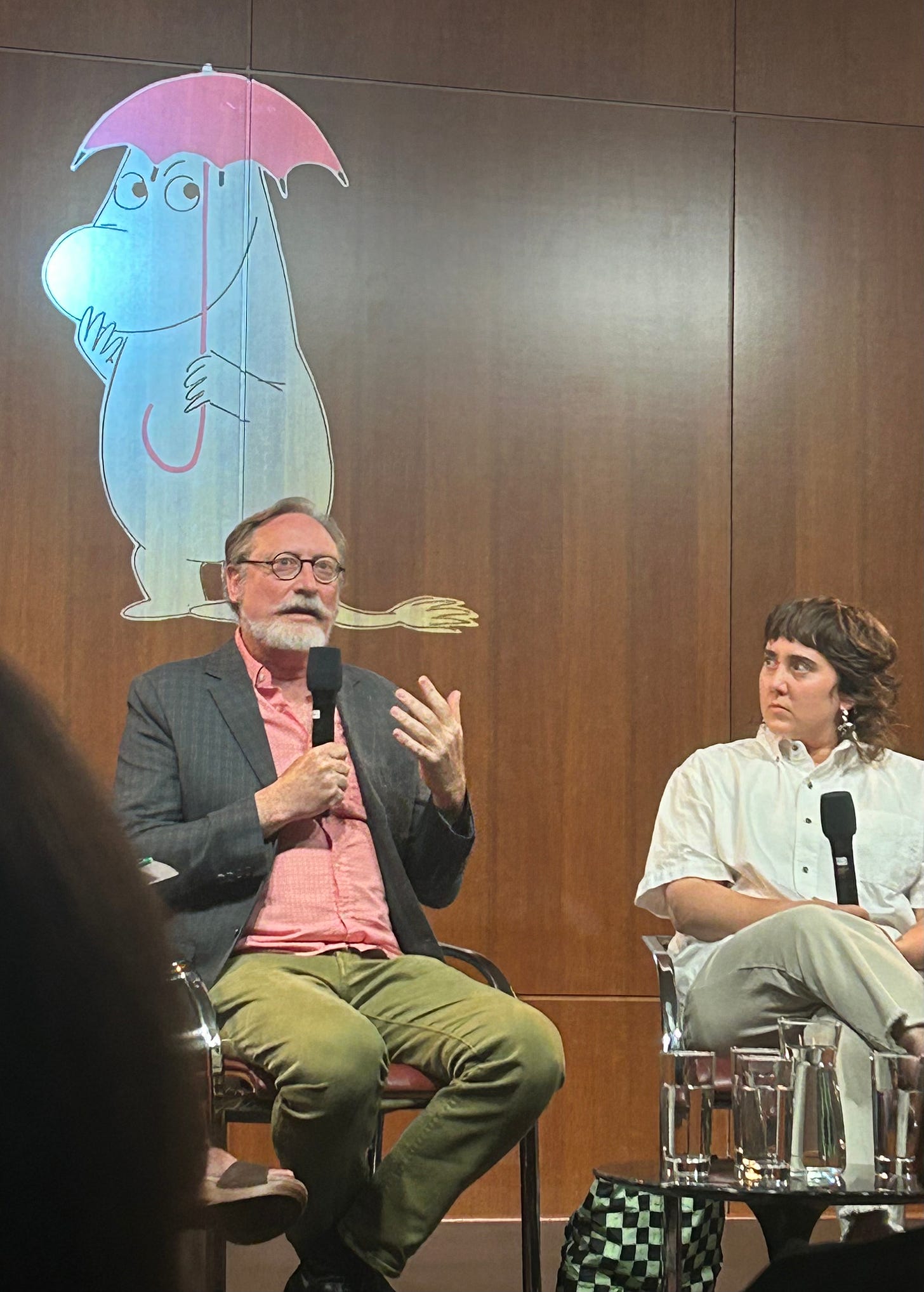


thank you for this generous recap!! The panel sounded wonderful and the exhibition itself looks so playful--the giant book doorway cutout, the pink and green! (Totally wrote to you about this exhibition in my letter, but I should've known you'd already be on it!)
What a lovely write up! Thank you for sharing. I had wanted to go to the panel but wasn’t able to so I really appreciate getting to be there through your lens. I’m excited to see the exhibit!